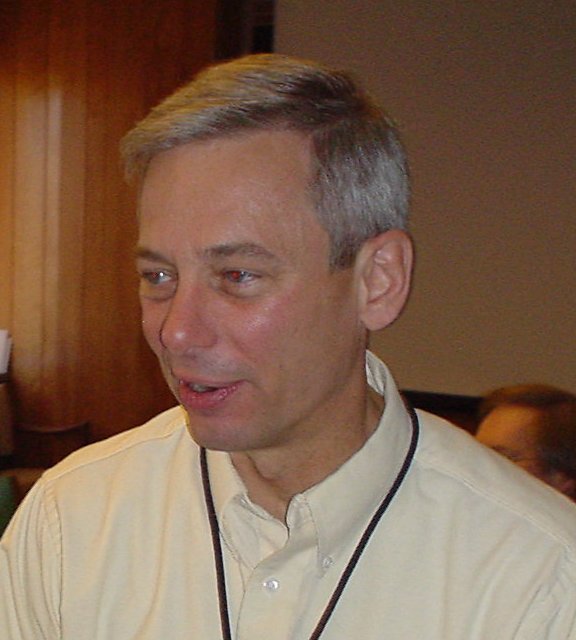- zajc
Basic Information

(Nov 1953–)
Location: Barstow, California, U.S.
1. Introduction
William Allen Zajc /ˈzaɪts/ is a U.S. physicist and the I.I. Rabi Professor of Physics at Columbia University in New York, USA, where he has worked since 1987.
2. Early Life
Born in Barstow, California on November 14, 1953, and raised in Brookfield, Wisconsin, he received his bachelor's degree from the California Institute of Technology in 1975. He went on to the doctoral program in physics at the University of California, Berkeley, where, as his thesis topic, he became the first person to use Hanbury-Brown Twiss correlations to measure the size of the interacting region between two colliding heavy ions.
3. Career
From 1982–86 he was first a post-doctoral fellow and then a professor at the University of Pennsylvania. In 1987 he accepted a professorship at Columbia University, where he has remained as a professor ever since. He has been a scientific leader in the field of heavy ion physics since early in his career, and he has performed extensive service for the broader nuclear physics community in the U.S. William A. Zajc was named a Fellow of the American Physical Society in 1997 and a Fellow of the AAAS in 2012.
Since the 1980s, his research has focused on experiments performed at Brookhaven National Laboratory (BNL) on Long Island, New York, first at the Alternating Gradient Synchrotron (AGS) and now at the Relativistic Heavy Ion Collider (RHIC). He was co-spokesperson of the AGS E859 experiment, which investigated strangeness production in heavy ion collisions, and later spokesperson of the PHENIX experiment at RHIC from 1997 to 2006. PHENIX is a multinational collaboration with over 500 scientists from more than a dozen countries and is one of the two large experiments at RHIC. PHENIX, along with three other RHIC experiments, determined that the relativistic heavy ion collisions at RHIC were successful in creating the quark–gluon plasma (QGP), a state of matter believed to have existed approximately 10 microseconds after the Big Bang. The RHIC experiments also discovered that this matter is in fact strongly interacting and nearly a perfect fluid. Since stepping down after nine years of dedicated service as spokesperson of PHENIX, he continues his research with the experiment, further characterizing the hot, dense matter formed in the collisions.
4. Important Contributions to Physics
- As a graduate student, pioneered the use of Hanbury-Brown Twiss techniques to measure the spatial extent of heavy ion collisions.
- Developed Monte Carlo methods for the generation of events with Bose–Einstein correlations.
- As co-spokesperson of E859, made seminal contributions to the measurement of strangeness production in low energy heavy ion collisions.
- Under his leadership as spokesperson, PHENIX published 31 Physical Review Letters covering all the major topics at RHIC, 16 papers in other peer-reviewed journals, and graduated 42 Ph.D.'s from institutions around the world.
5. Teaching
Most recently Zajc has taught Physics C1601 and C1602, the introductory physics courses for undergraduates majoring in the sciences and engineering. He has served as Chair of the Columbia University Physics Department since 2009.
6. Selected Publications
- "The First Few Microseconds", M. Riordan and W. A. Zajc, Sci. Am. 294 N5:24-31,2006
- W. A. Zajc et al., "Two-Pion Correlations in Heavy Ion Collisions", Phys. Rev. C 29, 2173 (1984).
- T. Åkesson et al. (Axial Field Spectrometer Collaboration), "Search for Quark Deconfinement: Strangeness Production in pp, dd, pα, and αα Collisions at √sNN = 31.5 and 44 GeV", Phys. Rev. Lett. 55, 2535 (1985).
- W. A. Zajc, "KNO Scaling Isn't What It Used to Be", Phys. Lett. B 175, 219 (1986).
- W. A. Zajc, "Monte Carlo Calculational Methods for the Generation of Events with Bose–Einstein Correlations", Phys. Rev. D 35, 3396 (1987).
- Y. Akiba et al. (E-802 Collaboration), "Bose–Einstein Correlation of Kaons in Si + Au Collisions at 14.6A GeV/c", Phys. Rev. Lett. 70, 1057 (1993).
- Y. Akiba et al. (E-802 Collaboration), "Production of φ Mesons in Central 28Si + 196Au Collisions at 14.6A GeV/c", Phys. Rev. Lett. 76, 2021 (1996).
- K. Adcox et al. (PHENIX Collaboration), "Centrality Dependence of Charged Particle Multiplicity in Au-Au Collisions at √sNN = 130 GeV", Phys. Rev. Lett. 86, 3500 (2001).
- K. Adcox et al. (PHENIX Collaboration), "Measurement of Single Electrons and Implications for Charm Production in Au + Au Collisions at √sNN = 130 GeV," Phys. Rev. Lett. 88, 192303 (2002).
- K. Adcox et al. (PHENIX Collaboration), "Transverse-Mass Dependence of Two-Pion Correlations in Au + Au Collisions at √sNN = 130 GeV", Phys. Rev. Lett. 88, 192302 (2002).
- K. Adcox et al. (PHENIX Collaboration), "Suppression of Hadrons with Large Transverse Momentum in Central Au + Au Collisions at √sNN = 130 GeV", Phys. Rev. Lett. 88, 022301 (2002).
7. Honors and Awards
- 2014 Tom W. Bonner Prize in Nuclear Physics [1]
The content is sourced from: https://handwiki.org/wiki/Biography:William_Allen_Zajc
References
- "Tom W. Bonner Prize in Nuclear Physics". American Physical Society. http://www.aps.org/programs/honors/prizes/bonner.cfm. Retrieved 2 December 2014.
